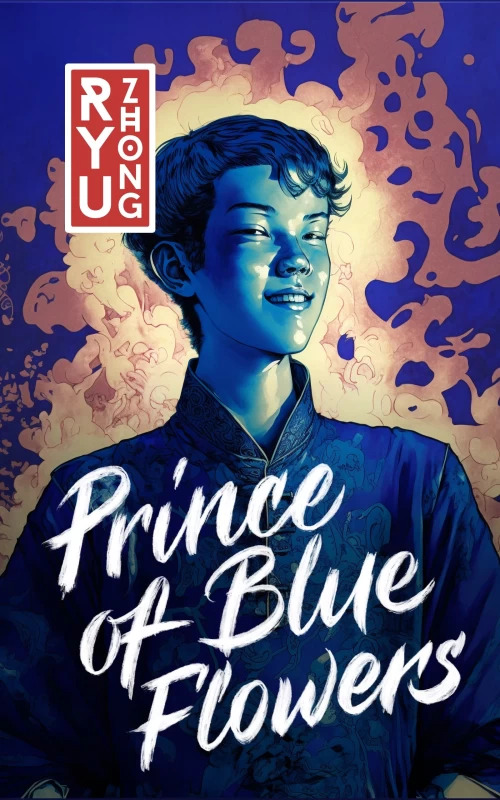
The roots of evil run deep in Prince of Blue Flowers by Ryu Zhong, a sprawling and fantastic opening chapter to the Adventures of Takuan from Koto series.
Demons, gods, emperors, and fatal negotiations with otherworldly beings populate these pages in a relentless weaving of magic, legend, and indigenous folklore. At the same time, the focal characters are unassuming and simple heroes on their own journeys of self-discovery. Whether it is Ta-Guan’s bizarre capers while hunting down the sun, or Hatsukoi pilfering melons, pranking blacksmiths, or artfully acquiring a governor’s horse, there is a childish pleasure imbuing nearly all the events and lessons learned for these figures, both real and celestial.
Going beyond the typical parable or tall tale, there are elements of Zhong’s storytelling that feel like epic poetry, while other moments are closer to a dictated battle in a well-designed D&D campaign. That is not meant as a critique, but as a note on the style, depth, and tone. This undeniably unique tale is like Aesop’s Fables meets Siddhartha and A Midsummer Night’s Dream all in one, with a healthy dash of Robin Hood and Tom Sawyer for good measure.
A kaleidoscope of nearly unbelievable characters tumbles through a magical realm not too dissimilar from our own history – or future. When Hatsukoi’s mischief gets him in real trouble, he must bid his parents farewell and go into hiding at a monastery, though his endlessly curious mind doesn’t fare well in that cloistered environment. Learning what spiritual wisdom he can, and adopting a new name, Takuan is ready to face his devilish destiny.
The stakes feel high throughout, but there isn’t a great deal of tension in the prose, perhaps due to the declarative nature of Zhong’s writing. Even when something shocking or dramatic occurs, it is presented in much the same way as any other action or event. The endings of the chapters – summary sentences encouraging readers to continue – are somewhat unnecessary, and feel redundant or even patronizing, particularly for older readers. While the book’s target age range includes adults, the writing is generally simple, and it frequently feels like an allegorical and symbol-heavy YA novella, which is not necessarily the intention, and may even be too young at times for a YA audience. There is also some fourth-wall breaking in the midst of passages, rather than less intrusive line breaks.
Philosophically and morally, this is a beautifully crafted tale, on par with classic religious texts in its wisdom, but more applicable to the mindsets of modern readers. Overcoming self-doubt, eradicating evil thoughts within yourself, identifying and transcending the ego, and learning to trust those around you may seem like familiar themes, but their subtle and humorous weaving into the narrative is evidence of a skilled storyteller. As this is a work in translation, a keen native editor could readily identify the more out-of-place vocabulary and smooth the overall reading experience, but the messages peppered throughout the story come through clearly.
Overall, despite some technical and translational issues, Prince of Blue Flowers is a novel replete with timeless lessons, clever foils, and a perpetual echo of mythology that is both illuminating and entertaining.
Book Links
STAR RATING
Design
Content
Editing
Get an Editorial Review | Get Amazon Sales & Reviews | Get Edited | Get Beta Readers | Enter the SPR Book Awards | Other Marketing Services























Leave A Comment